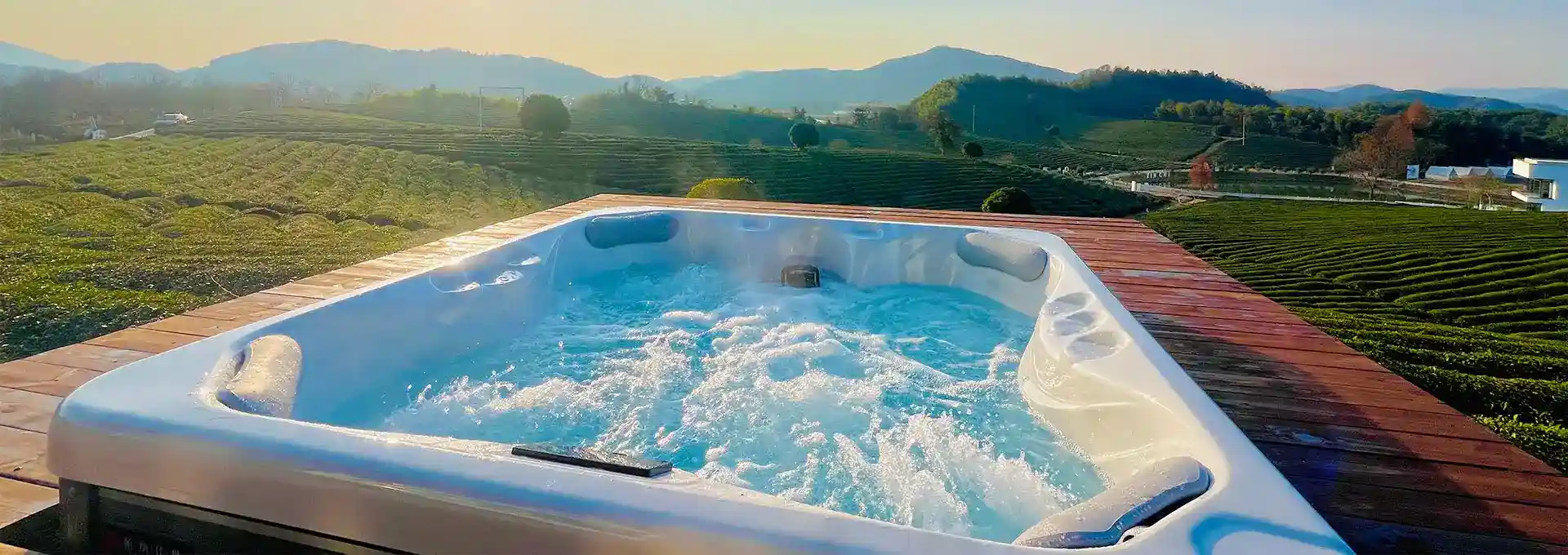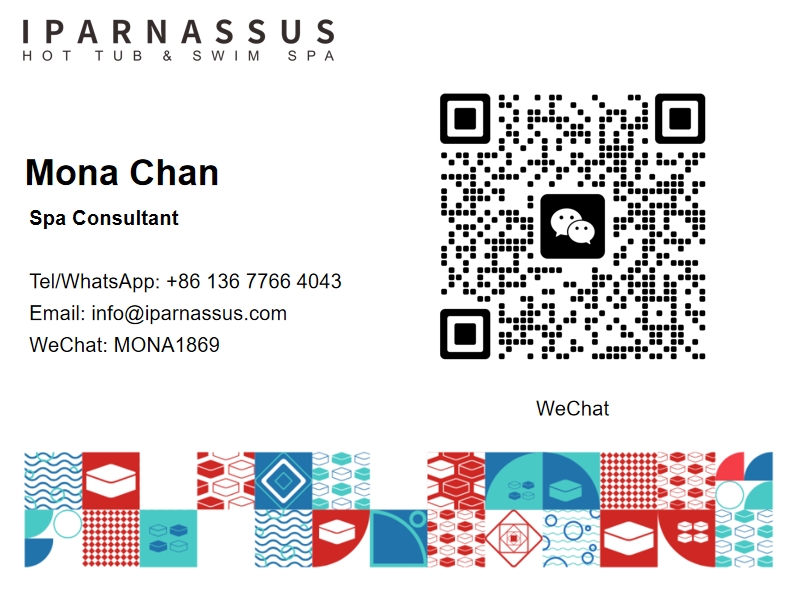What Mode Saves the Most Energy in My Swim Spa?
2024-12-19 16:58:03
Swim spas are a popular choice for fitness enthusiasts and those seeking relaxation at home. However, these versatile water features can consume significant energy, impacting both the environment and your utility bills. Understanding the most energy-efficient modes of operation is crucial for maximizing the benefits of your swim spa while minimizing its energy consumption. In this blog post, we'll explore the various modes available in swim spas and identify which ones are the most energy-efficient, helping you make informed decisions about your swim spa usage.
How does the eco mode in a swim spa work?
Eco mode, also known as economy mode or energy-saving mode, is a feature designed to reduce energy consumption in swim spas. This mode works by adjusting various parameters of the spa's operation to minimize power usage while still maintaining essential functions. Here's a detailed look at how eco mode typically functions:
- Temperature Reduction: One of the primary ways eco mode saves energy is by lowering the water temperature. The spa will maintain a temperature that's a few degrees lower than the standard setting. This reduction in temperature significantly decreases the amount of energy required to heat the water continuously.
- Filtration Cycle Adjustments: Eco mode often modifies the filtration cycles, reducing their frequency or duration. While this saves energy, it's important to note that the water is still filtered sufficiently to maintain cleanliness and hygiene.
- Pump Operation: The circulation pumps may operate at lower speeds or for shorter periods in eco mode. This reduces energy consumption while still ensuring adequate water circulation.
- Smart Heating: Many modern swim spas with eco mode use intelligent heating systems. These systems analyze usage patterns and ambient temperatures to optimize heating cycles, heating the water only when necessary.
- Automatic Activation: Some advanced swim spas can automatically switch to eco mode during periods of inactivity or at predetermined times, such as overnight or when you're away from home.
The effectiveness of eco mode can vary depending on the specific model of your swim spa and environmental factors such as ambient temperature and frequency of use. On average, using eco mode can reduce energy consumption by 20-30% compared to standard operating modes. This translates to significant savings on energy bills over time.
It's worth noting that while eco mode is excellent for energy conservation, it may not be suitable for all situations. For instance, if you plan to use your swim spa frequently or need to maintain a specific water temperature for therapeutic purposes, you might need to use standard mode more often. However, for periods of lower usage or when you're away, eco mode is an excellent option for maintaining your swim spa efficiently.
What is the most efficient temperature for a swim spa?
The most efficient temperature for a swim spa balances comfort, usability, and energy efficiency. Finding this optimal temperature is crucial for enjoying your swim spa while minimizing energy consumption. Here's a comprehensive look at temperature considerations for swim spas:
- Ideal Temperature Range: For most users, the ideal temperature range for a swim spa is between 80°F and 84°F (26.7°C to 28.9°C). This range is comfortable for swimming and light exercise while being energy-efficient.
- Energy Efficiency Considerations: Every degree you raise the temperature increases energy consumption by about 10-15%. Therefore, keeping the temperature as low as comfortably possible can significantly reduce energy costs.
- Activity-Based Temperature Settings:
- For vigorous swimming or exercise: 78°F to 82°F (25.6°C to 27.8°C)
- For moderate activity: 82°F to 86°F (27.8°C to 30°C)
- For relaxation: 86°F to 90°F (30°C to 32.2°C)
- Seasonal Adjustments: Consider adjusting the temperature based on the season. In warmer months, you might be comfortable with a lower temperature, while in colder months, you might need to increase it slightly.
- Heat Loss Factors: Factors like ambient temperature, wind exposure, and the quality of your swim spa cover can affect heat loss. A well-insulated spa with a good cover will maintain temperature more efficiently.
To maximize energy efficiency while maintaining comfort, consider the following strategies:
- Use a High-Quality Cover: A well-fitted, insulated cover can significantly reduce heat loss when the spa is not in use.
- Utilize Smart Temperature Controls: Many modern swim spas come with programmable temperature controls. Set lower temperatures during periods of non-use and have the spa heat up just before you plan to use it.
- Regular Maintenance: Keep filters clean and maintain proper water chemistry. A well-maintained spa operates more efficiently.
- Wind Protection: If possible, position your swim spa in an area protected from wind, which can accelerate heat loss.
- Gradual Temperature Changes: When adjusting temperatures, do so gradually. Large, sudden temperature changes require more energy.
Remember, the most efficient temperature is one that meets your needs while minimizing energy use. It's worth experimenting with different temperatures to find your personal sweet spot that balances comfort and efficiency.
How can I reduce the running costs of my swim spa?
Reducing the running costs of your swim spa involves a combination of smart usage habits, proper maintenance, and energy-efficient practices. Here are comprehensive strategies to help you minimize the operational expenses of your swim spa:
- Optimize Temperature Settings:
- Lower the temperature when the spa is not in use.
- Use a programmable thermostat to heat the spa only when needed.
- Consider using a lower temperature for swimming and exercise, raising it only for relaxation.
- Invest in a High-Quality Cover:
- A well-insulated, tight-fitting cover can significantly reduce heat loss.
- Regularly inspect and replace the cover if it shows signs of wear or damage.
- Utilize Energy-Efficient Modes:
- Use the spa's eco or economy mode when possible.
- Take advantage of off-peak electricity rates by heating during these times.
- Maintain Proper Water Chemistry:
- Balanced water requires less energy to maintain and prolongs equipment life.
- Regularly test and adjust water chemistry to prevent issues that could increase energy use.
- Regular Cleaning and Maintenance:
- Clean or replace filters as recommended by the manufacturer.
- Keep the spa and its components clean to ensure efficient operation.
- Optimize Pump Usage:
- Use circulation pumps at the lowest effective speed.
- Schedule filtration cycles during off-peak hours.
- Consider Solar Heating:
- Solar heating panels can significantly reduce heating costs, especially in sunny climates.
- While initial installation costs may be high, long-term savings can be substantial.
- Upgrade to Energy-Efficient Equipment:
- When replacing pumps or heaters, opt for energy-efficient models.
- LED lighting uses less energy than traditional bulbs.
- Strategic Placement:
- Position the spa in a sheltered area to minimize heat loss from wind exposure.
- Consider building a structure around the spa for additional insulation.
- Smart Usage Habits:
- Limit the use of high-energy features like waterfalls when not necessary.
- Encourage family members to use the spa consecutively rather than heating it multiple times a day.
Implementing these strategies can significantly reduce the running costs of your swim spa. It's important to find a balance between energy efficiency and enjoyment. Regular monitoring of your energy usage and adjusting your habits accordingly can lead to substantial savings over time without compromising the benefits and pleasure of owning a swim spa.
For more information on hot tub installations and to find out more about our products, please feel free to contact us at info@iparnassus.com.
References
- Energy.gov. "Energy-Efficient Home Design."
- SwimUniversity.com. "How to Save Money on Pool Heating Costs."
- PoolResearch.com. "Energy Efficient Swimming Pools and Spas."
- HotSpring.com. "Energy Efficiency in Hot Tubs and Spas."
- SpaDepot.com. "Hot Tub Energy Efficiency Guide."
- SwimEx.com. "Energy Efficient Swim Spas."
- AquaComfort.com. "Swim Spa Energy Efficiency Tips."
- MasterSpas.com. "Swim Spa Energy Usage and Efficiency."
- HydroPoolHotTubs.com. "Energy Efficient Hot Tubs and Swim Spas."
- EnergyStarPartners.net. "ENERGY STAR Certified Pool Pumps."
Send Inquiry
Related Industry Knowledge
- Can Hotel Hot Tubs in the Middle East Withstand the Heat and Water Scarcity?
- How Much Water Should Be in My Swim Spa?
- What Size Swim Spa Should I Buy?
- How Long After Tattoo Can You Go in Hot Tub?
- Does Hot Tub Wiring Need to Be Buried?
- Should I Get a Hot Tub or a Swim Spa?
- can corona virus live in hot tubs
- How Long Do Outdoor Hot Tubs Last?
- Can a Newborn Go in a Hot Tub?
- Can You Go in a Hot Tub After Tanning Bed?



